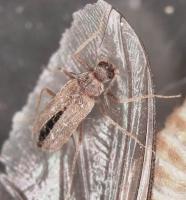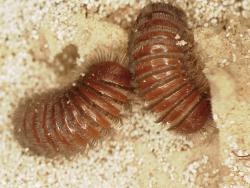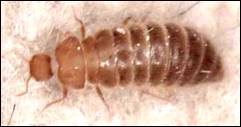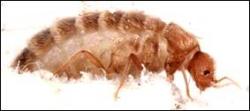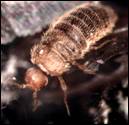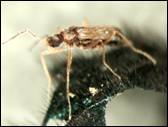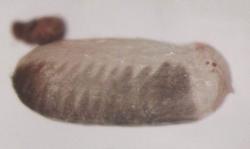Adult
Size
2 to 3 mm long (males) or 3 to 4.5 mm long (females).
Aspect
Males are quite different from females, so that one could think they belong to 2 distinct species. Males are elongate, slightly sclerotized and they have soft elytra that frequently allow their abdomen to be seen. Their antennae and legs are quite developed and much longer than females’.
Females look like larvae: they have no elytra, no wings. They are longer and sturdier than males. Their antennae are relatively short, hardly longer than their head.
Whether male or female, the head is quite distinct from the pronotum, which is not always the case in other Dermestidae species.
Colour
Males are yellowish to yellowish brown; females are a light reddish brown.

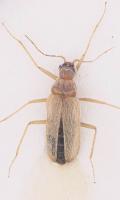
 Dermeste étroit
Dermeste étroit  Odd beetle, Tissuepaper beetle
Odd beetle, Tissuepaper beetle  Speckkäfer
Speckkäfer 